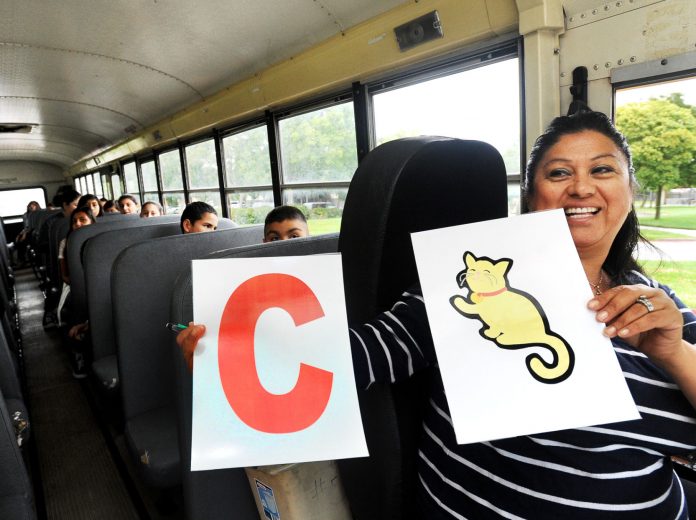
Hollister School District trustees unanimously approved placing a second bond before voters in the November ballot, at a special board meeting this week.
“I don’t think there’s much doubt about the need for a bond,” said Superintendent Gary McIntire, who referenced needs at the Accelerated Achievement Academy and Calaveras School that had been brought up earlier in the same meeting.
Voters approved Measure M—a $28.5 general obligation facilities bond—in November of 2014. As a Proposition 39 bond, Measure M required at least 55 percent voter approval to pass. This newer, proposed Prop. 39 bond would need the same amount of community support to go into effect.
The district could qualify for roughly $35 million in bond money in the next round, McIntire explained. Architects working with the district recently estimated a new school could be about $40 million and the construction costs are going up, he said.
Trustees previously discussed the bond topic at the general meeting Jan. 26, where they heard from EMC Research, which reported an expected 65 percent of voters would be in favor of a possible bond measure, after conducting a telephone survey of voters in the area.
At that meeting, Emily Kerby Goodman, a representative of EMC Research, gave a PowerPoint presentation that showed the company did a survey in English or Spanish of about 400 voters within the boundaries of the school district. The key findings of those interviews included that concern about growth in Hollister had risen dramatically, the ratings of the district improved slightly, a $35 million bond was viable, and the community saw a need to reduce overcrowding and invest in technology, according to the presentation.
At the meeting this week, Board President Elizabeth Martinez made a motion that was seconded by Trustee Mike Baldwin—and unanimously approved by the rest of the board in a roll call vote—to put the bond measure on a ballot.
In supporting a second bond, trustees immediately faced a second question: whether to place that measure on the ballot in June or November.
Baldwin made a motion, seconded by Elsa Rodriguez, to put the bond measure on the November ballot.
Before that vote, McIntire highlighted possible pluses for placing the measure on the June ballot, which included that there would most likely be less competing items on the ballot; and the sooner the measure is approved, the sooner the district receives funding, though there are still two more issuances of the current bond.
The superintendent also emphasized the downsides of putting the issue on the June ballot, including that the district would have to pay a greater share of election costs since less entities would be participating; mobilizing a committee would be harder in the spring with the school year winding down; and there would be a short turnaround to get the measure ready for ballot.
McIntire also mentioned the things that would need to be complete by March to get a measure on the June ballot. The district would need to come up with a detailed project list, a ballot statement approved by bond counsel, and several people that weren’t trustees who were willing to support putting the measure on the ballot, he explained.
“All of that would need to be done by March 11,” he said.
Trustee Peter Hernandez added he knew the district needed the bond but he was concerned about competing measures on the ballot. He also questioned how many of the surveyed voters were homeowners who would actually be taking on the burden of this tax.
Baldwin highlighted the margin or plus or minus 4 percent with the district funded survey run by the private company and called it a “pretty good random sampling.” The margin of error was plus or minus 4.9 percent, according to the PowerPoint presentation shared with trustees at the earlier board meeting.









